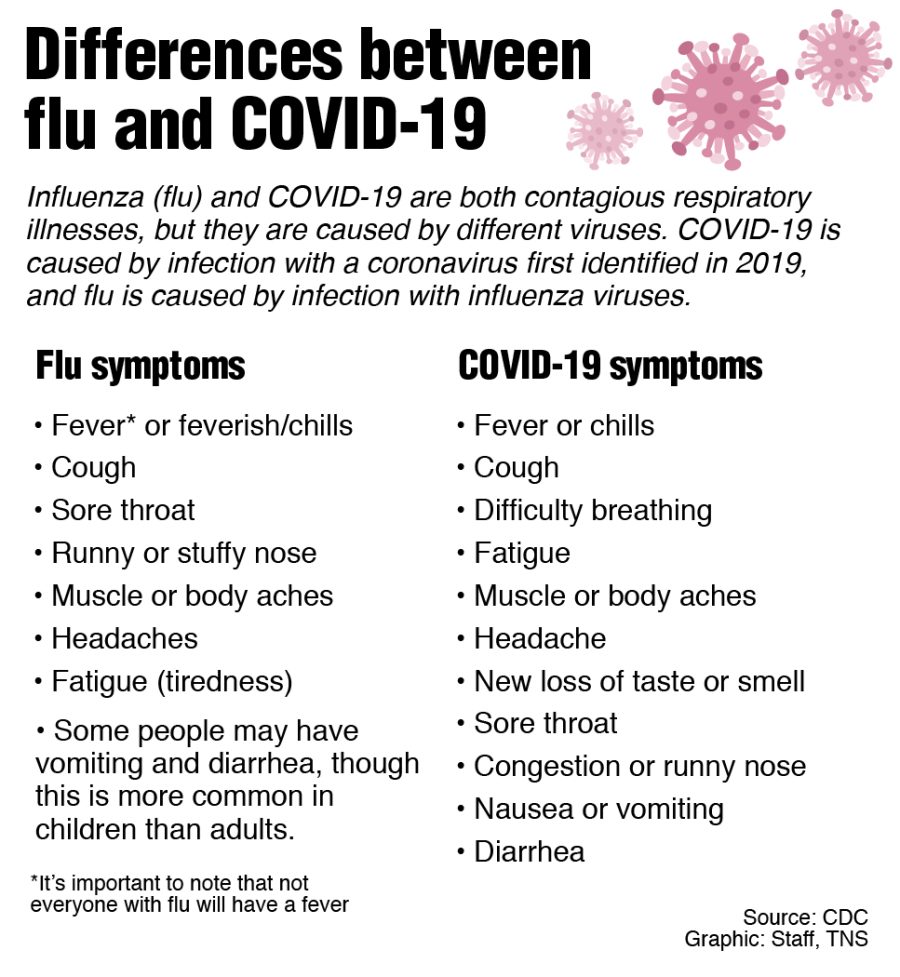The Student Health Services at Mesa College held an online seminar on the afternoon of Sep. 27, featuring Drs. John Malone, MD, MPH, Calvin Wong, MD, and Sarah Williams, DNP. They informed students and staff about the growing number of COVID-19 cases in San Diego County, and how to prevent the virus from spreading across campus.
The San Diego Epidemiology and Immunization Services Branch (SDEPI) observed an increase of about 8% in positive coronavirus specimens collected from July 7 to Sep. 9, 2023. Within those months, there have been a total of 12,541 cases and 50 deaths reported to the SDEPI. Dr. Malone noted 34 community outbreaks from Sep. 11 to Sep. 17, of which all but one occurred at schools. Highly populated colleges like Mesa are susceptible to COVID-19 outbreaks due to crowdedness and poorly ventilated classrooms, so it’s important to take precautions in order to protect families and households.
Dr. Malone first encourages getting the COVID-19 vaccine, which is effective in boosting antibodies to defend against the virus. Omicron variants survive up to eight hours in the air and 48 hours on hard surfaces. “Bleach-based solutions are very effective to quickly kill the virus,” on surfaces, he said. Other commercial products, like Lysol, can achieve the same effect.
Paxlovid is a helpful antiviral treatment for those 12 and older, decreasing transmission, symptoms, and long COVID risk. Long COVID is a post-coronavirus condition with a 10% chance of spreading to other people, according to Dr. Malone. He suggested contacting patient care management or Sesame Care at the number 833-686-5051 if one is suffering from fatigue and brain fog, which are the most common symptoms. It is an exhausting condition that may last from weeks to years. Before taking Paxlovid, check for drug interactions, especially if on cardiac antiarrhythmics or blood thinners.
Congestion, nausea, and diarrhea have been newly added to the Centers for Disease Control and Prevention’s (CDC’s) list of coronavirus symptoms, said Dr. Wong. It is necessary to test immediately after exposure and/or presentation of symptoms in order to minimize personal and public risk. Polymerase chain reaction (PCR) tests are considered standard and reliable. Pharmacies and other health care providers offer PCR tests, with results taking up to three days to receive.
Rapid antigen tests can be ordered online and taken at home, with results taking only 15 minutes to 30 minutes. However, the PCR test is more definitive than the rapid test. “Having a positive test is considered accurate and reliable, but having a negative test does not rule out infection,” Dr. Wong explained. “Assess your risk and repeat testing if necessary.”
If a negative result is received from one rapid test while a person shows symptoms, the Food and Drug Administration (FDA) recommends testing for another negative result 48 hours later to confirm the presence of infection. If symptoms persist despite confirmation of a negative result, wear a high-quality mask, such as the KN95, and retest in one to two days. Exposure to the virus with negative results and no symptoms still requires wearing a mask and retesting in three to five days. In this circumstance, the FDA recommends testing for two more negative results 48 hours apart if a rapid test is used.
In the case of a positive result, the San Diego County guidelines require isolation for a minimum of five days, or until symptoms naturally improve. Dr. Williams recommends using the CDC’s isolation and exposure calculator as guidance for how long one should isolate, depending on when exposure or symptoms began. The calculator does not account for ill or immunocompromised individuals. Until day 11, avoid people at high risk of COVID-19 and wear a mask indoors and outdoors. Dr. Malone says that the county permits a person to lose their mask earlier if they receive two negative rapid tests 24 hours apart before then.
As winter approaches, the flu and respiratory syncytial virus become more common alongside the rising cases of COVID-19, so it is recommended to get vaccinated for those illnesses as well.


